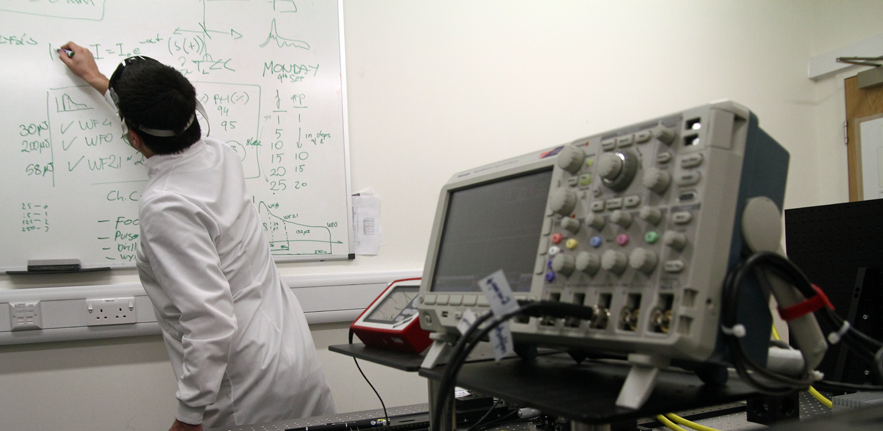
The aims of the course are to examine the advance of optical techniques into electronic systems for computation and communications.
LocationCambridge, Engineering Department LeaderProf T Wilkinson |
Structure16 Lectures AssessmentAttendance only |
Objectives
As specific objectives, by the end of the course students should be able to:
- appreciate the derivation and application of diffraction and Fourier optics;
- apply Fourier techniques to simple optical spatial patterns;
- understand the principles of optical correlation and holography;
- understand the principles of liquid crystal phase modulation;
- explain the principles and construction of spatial light modulators (SLMs);
- know the basic function of adaptive optical systems;
- understand the properties of optical aberrations and how to correct them;
- understand the basic principles of optical trapping and tweezing.
Syllabus
The aim of this module is to examine the advance of optical techniques into electronic systems for computation and communications. Two dimensional and three dimensional transmission, storage and processing of information using free space optics are discussed. Applications such as computer generated holography, optical correlation, optical switching and adaptive optics are highlighted through the use of liquid crystal technology.
Fourier Holograms and Correlation (6L, Prof T D Wilkinson)
- Basic diffraction theory, Huygens principle;
- Fourier Transforms and Holography introduction and motivation;
- Fourier transforms: theoretical and with lenses: resolution of optical systems;
- Correlation and convolution of 2-dimensional signal patterns;
- Dynamic and fixed phase computer generated holograms.
Electro-Optic Systems (6L, Prof T D Wilkinson)
- Free space optical components; wave plates and Jones matrices;
- Fundamentals of liquid crystal phase modulation;
- Spatial light modulation and optical systems;
- Holographic interconnects and fibre to fibre switching;
- Wavelength filters and routing systems;
- The BPOMF and 1/f JTC correlators.
Adaptive optical Systems (4L Dr S Morris)
- • Adaptive systems in free space optics;
- • The power of phase conjugation;
- • Adaptive optical interconnects;
- • Optical aberrations and optical correction techniques.
Demonstrations in the lectures will include:
- • 2D Fourier transform and diffraction patterns.
- • Computer generated hologram for optical fan-out.
- • Optical beam steering with dynamic holograms on SLMs.
- • The JTC

